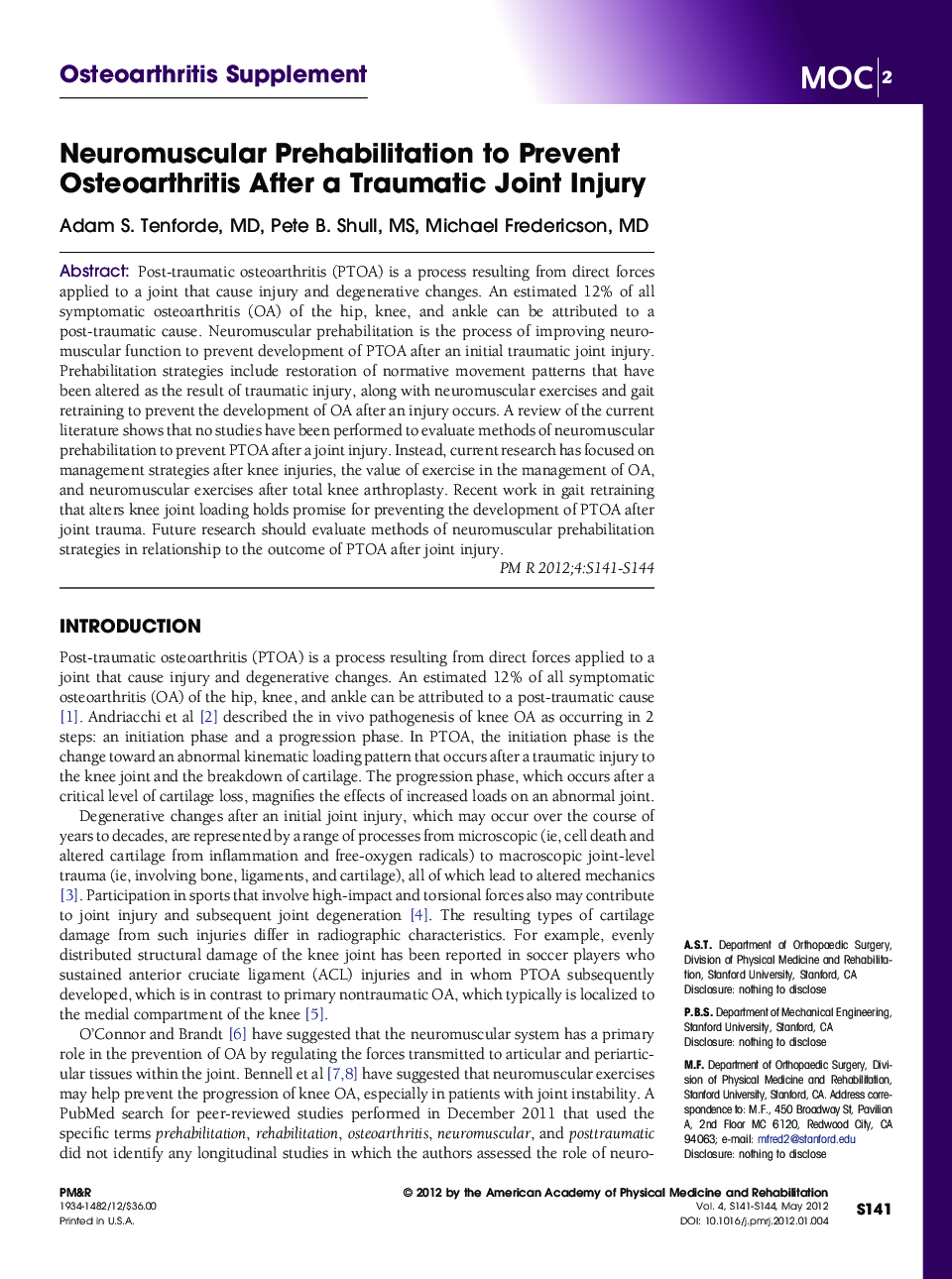| Article ID | Journal | Published Year | Pages | File Type |
|---|---|---|---|---|
| 2705741 | PM&R | 2012 | 4 Pages |
Post-traumatic osteoarthritis (PTOA) is a process resulting from direct forces applied to a joint that cause injury and degenerative changes. An estimated 12% of all symptomatic osteoarthritis (OA) of the hip, knee, and ankle can be attributed to a post-traumatic cause. Neuromuscular prehabilitation is the process of improving neuromuscular function to prevent development of PTOA after an initial traumatic joint injury. Prehabilitation strategies include restoration of normative movement patterns that have been altered as the result of traumatic injury, along with neuromuscular exercises and gait retraining to prevent the development of OA after an injury occurs. A review of the current literature shows that no studies have been performed to evaluate methods of neuromuscular prehabilitation to prevent PTOA after a joint injury. Instead, current research has focused on management strategies after knee injuries, the value of exercise in the management of OA, and neuromuscular exercises after total knee arthroplasty. Recent work in gait retraining that alters knee joint loading holds promise for preventing the development of PTOA after joint trauma. Future research should evaluate methods of neuromuscular prehabilitation strategies in relationship to the outcome of PTOA after joint injury.
